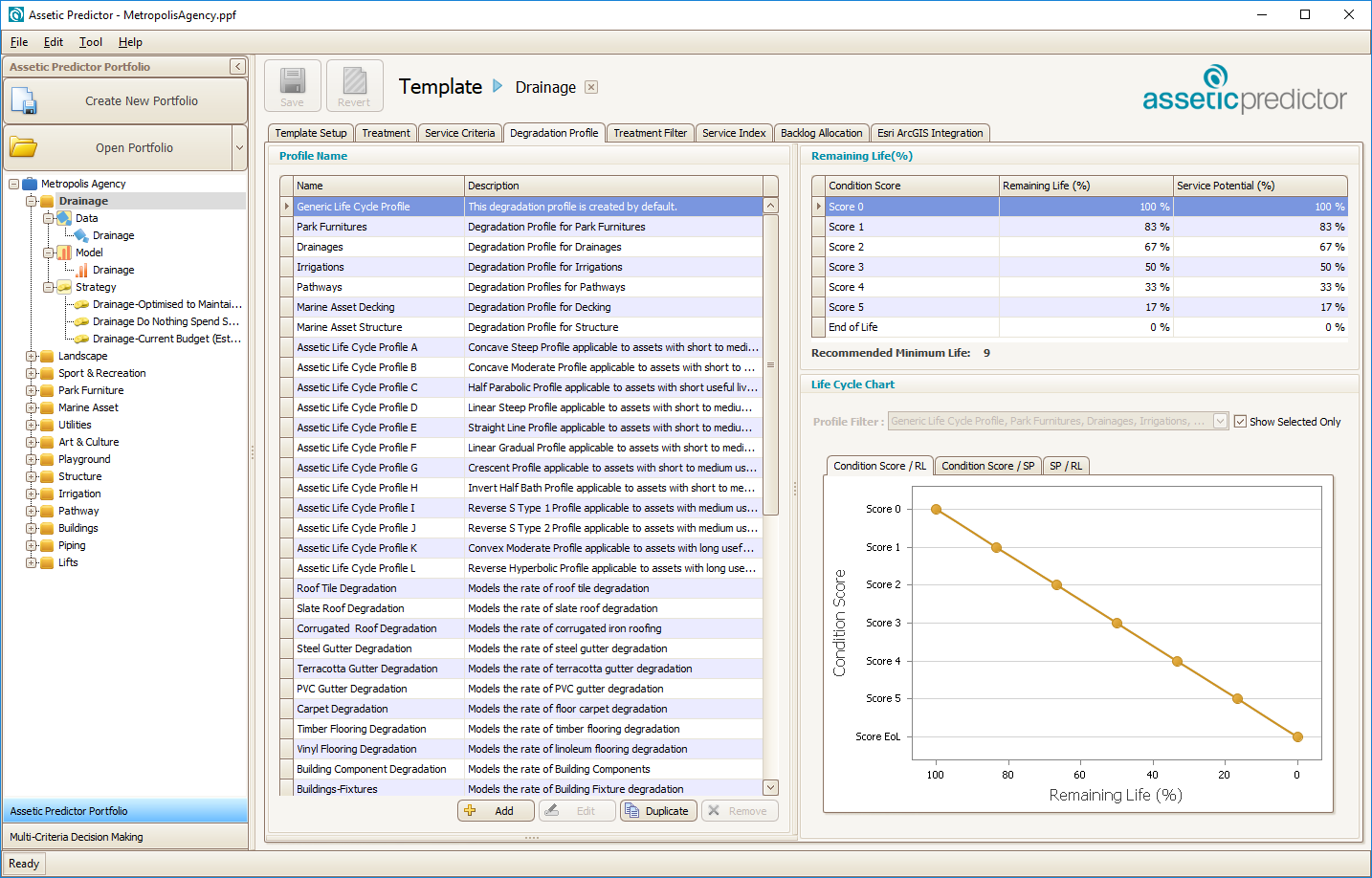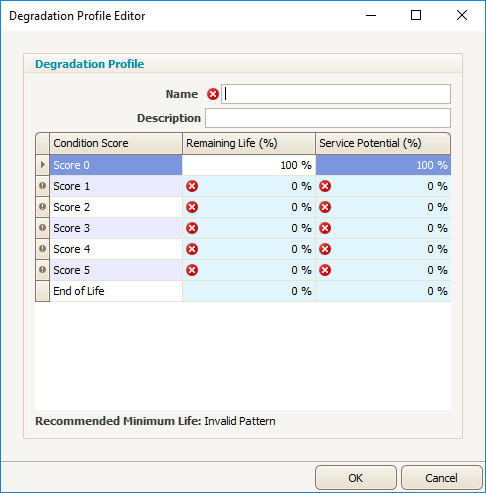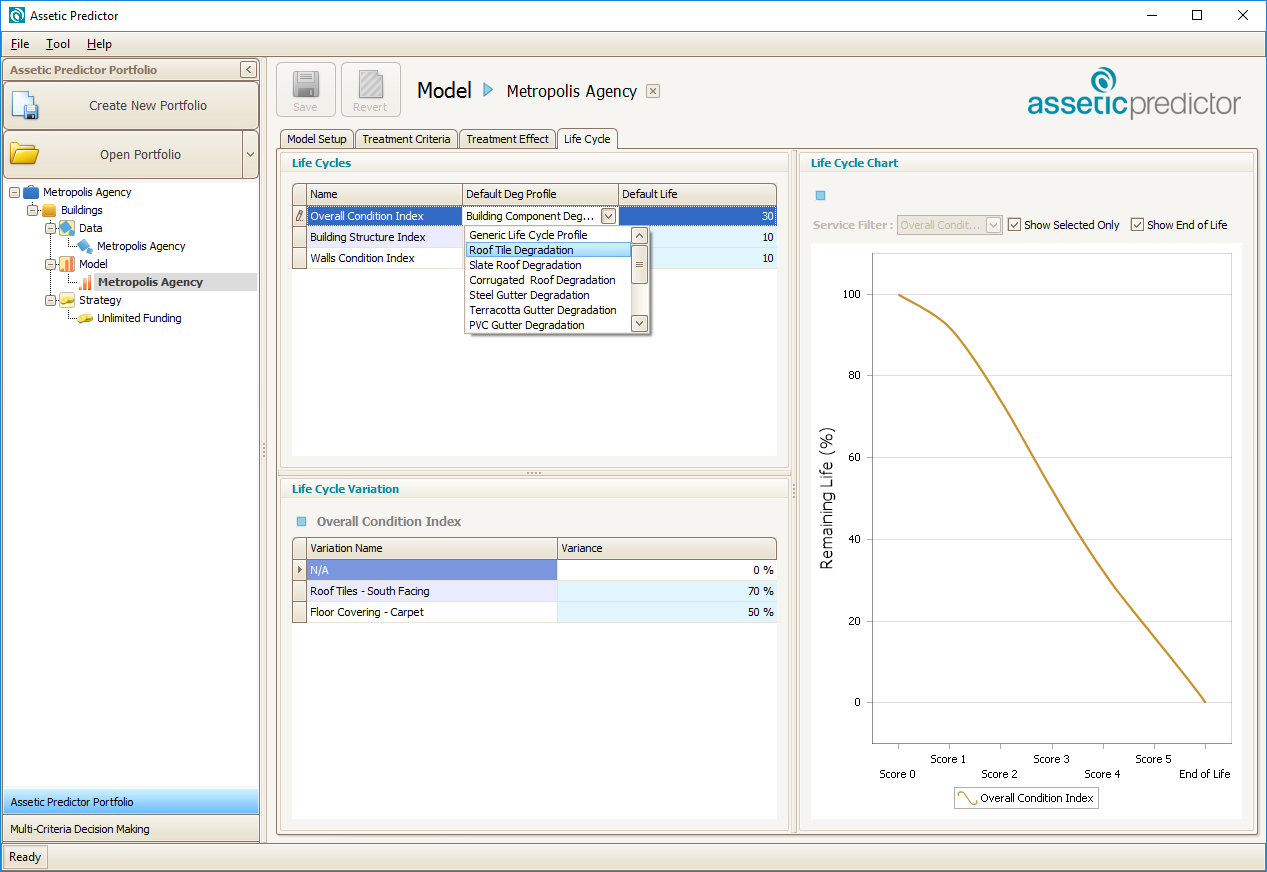Degradation Profiles
Objective: Gain an understanding of Degradation Profiles
The Degradation Profile is the foundation of Strategic Asset Life Cycle modelling.
The purpose of a degradation profile is to understand how an asset with, for example a 20 year life cycle, degrades over that time period.
The asset starts off as new or condition 0, and by year 20 it has transitioned to end of life or condition 6. To model this process we create a life cycle degradation profile.
The degradation profile of an asset represents the transition time of an asset or asset component from higher levels of service provided to lower levels, and eventually to end of life.
Infrastructure assets, however, seldom deteriorate in a straight line. There is typically a sharper drop in the service delivery potential of most infrastructure assets the further they progress through their life cycle. An asset's exact deterioration rate is influenced by a range of factors including the current condition, age, environmental factors, usage and user behavioural patterns, quality of raw materials and construction technology.
How assets deteriorate over their life is the most important factor that governs the capital treatment and maintenance treatment regimes of an agency. When a treatment regime is defined, different components of an asset (eg. for Buildings: roof, floor, walls, and fit outs) might have very different life cycle progression paths. Different degradation profiles specific to each asset or component type can be configured in the Template, and as a model matures additional degradation profiles can be added to improve accuracy.

Degradation Profiles can be copied using the ‘Duplicate’ button, and then modified using the ‘Edit’ button, and new degradation profiles are added using the ‘Add’ button:

The Remaining Life percentage and Service Potential percentage are configurable for each condition score by clicking in the appropriate cell and inputting a value, which must be greater than the subsequent score.
To set a Life Cycle:
- Click the Life Cycle tab
- Select the Degradation profile to use in the drop-down in the life cycles box:

